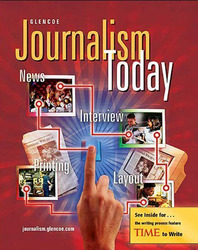
Journalism TodayChapter 7: Writing News Stories and HeadlinesOverviewBasic writing skills and some specialized information are all you need to write news stories. In the last chapter you learned how important the lead paragraph is to the story and to grabbing your readers' attention. Yet, journalists should write to hold their readers' interest beyond the lead as well. Quotes add a personal touch to a story. Use a back-up quote, or a quote that supports the lead, to hold your readers' interest. Transitions are essential tools for the journalist: they take your readers from subject to subject, fact to fact, time to time, and place to place without losing or confusing them along the way. Also use tiebacks, or details that bring in related developments, when necessary. Tiebacks can put the information in context, elucidating your readers' understanding of the current story. Not all news stories are written in the inverted-pyramid style. In fact, newspaper writing reads more and more like magazine writing. The storytelling style is a popular and effective approach to journalistic writing: it draws readers into the drama of the event by telling it as a narrative. You can tell the story chronologically or move around from one event to another. The combination style mixes the summary lead of the inverted-pyramid style with a chronological storytelling style and is particularly appropriate for action stories. Sidebar stories require a writing approach other than the inverted-pyramid style. No matter what style you employ in your article, you should avoid being biased and using offensive language, jargon, clichés, redundancy, and the passive voice. Also, remember to be concise: develop a clear and concise way of expressing yourself. Choose clear words and write straightforward sentences. All of these rules hold true when writing headlines as well. The headline's job is to lure the reader into the story. Headlines should be informative, lively, and interesting, but they should never promise something that isn't in the story. Headlines should use active verbs in the present tense (the verb to be is generally avoided) and should not include articles (a, an, or the). Usually only three punctuation marks are used in headline writing: the comma, the quotation mark, and the semicolon. Many varieties of headline styles exist, including the centered head, the flush-left/ragged-right head, the hammer head, the kicker, the wicket, the read-out head, and the read-in head. Avoid all-cap heads. Sometimes the copy editor writes the headlines, but the copy editor's main responsibilities include editing and coding the copy. The copy editor must be master of the publication's stylebook and of grammar, spelling, and punctuation. In addition to this the copy editor must check facts and attributions. Copyediting symbols are the copy editor's shorthand, these symbols tell those who are making corrections to the copy what to do. This job is vital as the copy editor is the last line of defense against inaccuracies. |  |















